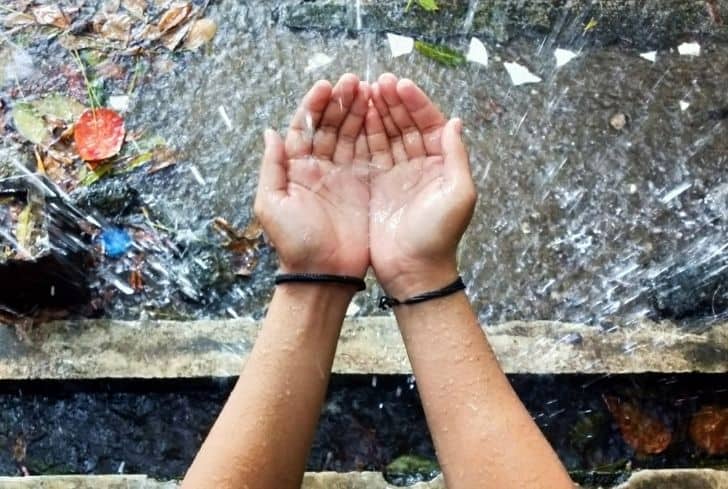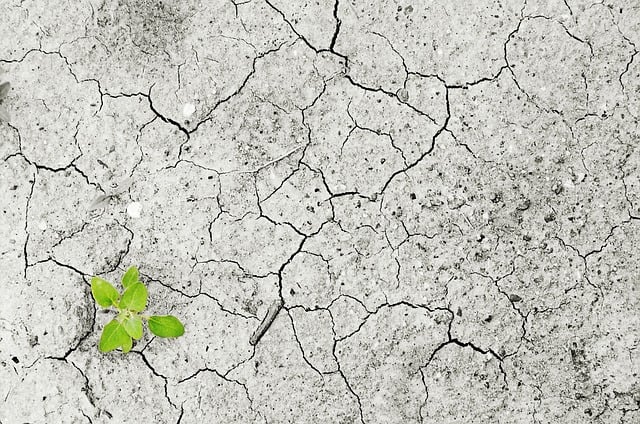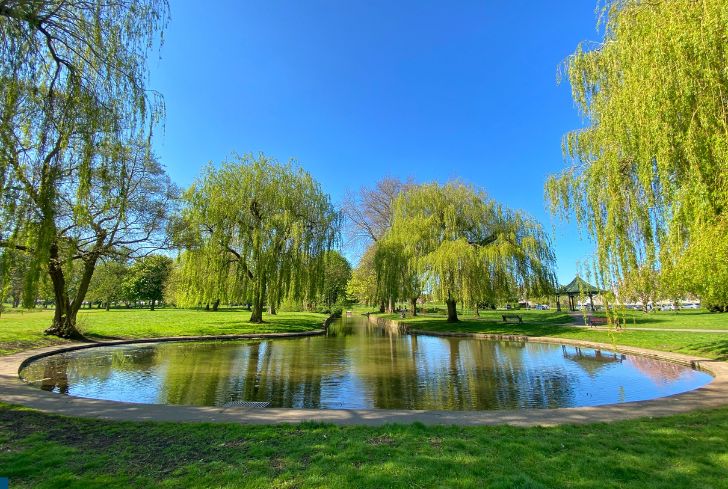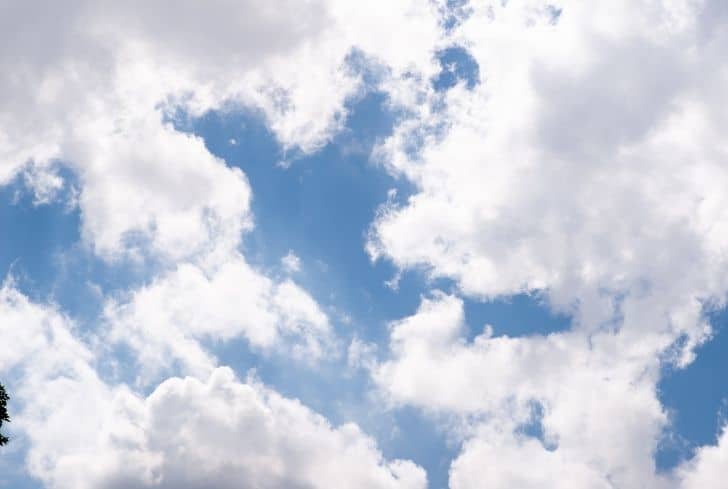Can Rainwater Go Into the Sewer? (or Septic Tank)

Water is life. It is a vital resource for our everyday processes. We drink it, use it in the kitchen, bathrooms, laundry room, garden. Just think of anything, and water is most likely used for it.
If water is so essential that we cannot do without it, have you ever stopped to think where all the water goes after you use them.
You wonder, why such an odd question? Of course, it goes right down the drain and into the sewer. How about rainwater? Can it go into the sewer? Can it cause flooding or clog your sewage system? We will discuss more on it in the next few sections. Read on to find more.
Can Stormwater Go Into Sewer?
No, it would help if you didn’t allow the stormwater into the sewer. It is advisable not to allow stormwater into the sewer due to the several eco-unfriendly results. We will take a look at that very soon. To begin with, what are stormwaters?
Stormwaters are rainwaters with any other waste or pollutant it carries along with them. The waste or pollutant can range from a series of contaminants such as oil and grease, leaves and animals droppings, litters of dirt, sediment from the soil.
Now, back to the unfriendly results. It can cause flooding because of the high-level water associated with storm waters that the sewers aren’t designed to handle. Sewers are designed to collect wastewater used in our buildings to treat and dispose of them to the appropriate channels.
There are two ways stormwater can go into sewers, so extra caution should be paid to these ways to avoid a greater amount of damage.
Infiltration is the first method of stormwater entering the sewers; undetected underground broken pipes can cause this.
Inflow, the second method, is a direct flow of rainwater to a sewer through an illegal roof downpipe. Several overflows cost a lot of time and money to solve, so you should intentionally keep stormwater out of the sewer.
Can Rainwater Go Into Sewer?
No, it shouldn’t. Rainwater is meant to be handled by storm drains.
Surface water is any water you can find on top of the earth. It is another term that can be used when talking about rainwater. Surface water, of any form, should not be polluted, and so, it shouldn’t go into a water sewer.
However, suppose you decide to allow your rainwater to go into the sewer. In that case, it is important to note that the attached water unit to the sewer might overflow during heavy rain, resulting in flood- and environmental damage.
This disturbance cancels out any separation that must have happened initially before the heavy rain. Aside from flooding, water pollution can occur when the already filtered out sediments and pollutants are washed and pass through the system to flow and be discharged into rivers, lakes, streams.
The rainwater from your property primarily either drains into the public sewer, which usually only accepts surface water at a cost, or drains into a septic tank if your property isn’t connected to a public sewer.
Yet, you should ensure two separate pipes in your drainage system—one for foul water to discharge and the other for surface water.
Can You Connect Stormwater Into the Sewer?
There are generally two types of drainage systems in a majority of the cities: sewage systems and stormwater systems. While the sewage system is used to collect and dispose of sewage from industries and households, stormwater systems are for managing rainwater.
These two systems are meant to work separately, but when stormwater starts entering the sewage system, the overflow of raw sewage water happens. Such overflows are significant threats to the atmosphere and have potential health risks. It is one of the main causes of water pollution in the cities.
So, no, you should not be connecting stormwater into the sewer by any means; it will only pollute the nearby water bodies.
Mainly, there are two ways through which stormwater can accidentally enter the sewage system:
1. Infiltration: cracked or broken pipes under the ground that is hard to detect.
2. Inflow: It is the direct flow of rainwater through the roofing downpipe which might be connected to the sewage system.
How Can You Keep Stormwater Out of the Sewage System?
An overflowing sewer system is an unpleasant and great threat to the environment. Hence, it is essential to separate the stormwater and sewage system during heavy rainfall.
However, there are ways through which you can prevent stormwater from getting into the sewerage system. Whether you have a home or industry, it is important to keep track of the stormwater.
Here are two useful ways through which you can keep stormwater out of the sewage system:
1. Camera Investigation: You can insert a remote control camera into the pipes to check the condition of the drainage.
2. Smoke Testing: Non-toxic smoke is passed through the pipes to check leakage in the pipes.
By following these two methods at regular intervals, you can ensure that rainwater drainage is not contributing to water pollution.
What Happens to the Sewage System When it Rains?
The effects of heavy rainfall can be instantly witnessed in the sewage systems. A flooded sewage system is not a joke but a major concern. Every sewage system is designed to handle the inflow of a certain amount of water and solid particles. When it rains heavily in your area, it directly affects your sewage.
Sewage systems ensure proper methods of removing the wastewater from your household. But when the overflow of rainwater penetrates deep into the underground system, the sewage levels start rising. It then starts flowing to drains, tubs, basements, and other water bodies in the city.
Improper wastewater drainage will eventually contaminate your drinking water and make your household vulnerable to germs and diseases. It can lead to mold formation and not forget the staggering population of rodents.
It is essential to take adequate measures to prevent rainwater from entering your sewage system. For this, you need to focus on a good plumbing infrastructure that secures your sewerage from rainwater.
There are plenty of local supports that you can avail of in your city for better management of sewage infrastructure. Also, it is the responsibility of the public welfare department that they continuously update sewage infrastructure to prevent the flooding of sewage during heavy rainfall.
It is best advised to keep plenty of drinking water stored at your home at the time of heavy rainfall to safeguard yourself from rainwater contamination. You should regularly connect with a plumber to get your sewerage system checked at regular intervals.
Can a Lot of Rain Cause Septic Problems?
We love enjoying the rain, and it really doesn’t matter if it rains a little heavier. While it doesn’t harm us by any means, heavy rains can bring big problems for the septic systems.
Heavy rain-related issues are often revolving around drain fields, and that’s why rainfall can lead to a wide range of septic issues that include clogged drain fields and ground flooding.
1. Ground Flooding: It is pretty simple to understand this issue. Heavy rainfall can flood the grounds in the drain fields. Your septic tank can only hold a certain amount of wastewater in it. When rainwater is added into it, the tank will not handle it, thereby resulting in ground flooding.
2. Clogged Drainfield: Another threat to your septic drainfield is clogging. When the drainfield is saturated, it will not be able to absorb the water, and it will be trapped, resulting in clogging. If the situation persists, it can overflow and damage your entire plumbing system.
It is imperative to follow adequate measures to prevent rainwater from entering the septic tank. Here are quick tips that can save you from discomfort later:
1. You must be careful about what goes into the drain.
2. Make sure that you redirect the run-off from the drainfield.
3. Keep your vehicles at a distance from the drainfield.
4. Start water conservation during rainstorms.
Will a Flooded Septic Tank Fix Itself?
Your septic tank’s main job is to drain all the wastewater from your home and prevent blockage. A flooded septic tank during rainfall will make the sewage back up in your home, creating a foul smell.
You have to deal with such a mess with adequate measures. There are lesser to no chances that your flooded septic tank will be fixed by itself. A majority of the time, you have to take the initiative to fix it. You can call an expert who can rightly diagnose the problem and find a solution.
Once the issue has been diagnosed, sewage professionals will dry out the ground around the drain field and septic tank. After that, your tank needs to be pumped. It is also essential to prevent any future flooding issues.
For this, you may have to take a few precautionary measures like installing a backflow preventer that will stop the backup of the flooded septic tank to your home’s drain. Fix your toilets, showerheads, and faucets immediately.
Can Gutters Drain Into Sewers?
Yes, gutters can drain into sewers, but this is considered illegal in several states, and if you are caught doing it by the law, you might end up paying a huge fine for that if it is illegal in your state.
To avoid being found guilty of this act, you can confirm with your state authorities to find out if it’s illegal or not. Regardless, draining gutters into the sewage has its pros and cons. Gutters can help protect your property from the floor by directing the rainwater towards the right deposition point.
They also prevent corrosion on wetlands. However, if not maintained properly, gutters can cause water overflows. When blocked, it can be a hassle to clean and remove the debris causing the blockage before water can flow naturally.
If you wonder where this gutter drainage goes, you should know there are three options for dispositions. The gutter drains to a drainage system, some flows into the street, and other drains into an underground sewer for some buildings.
Are Storm Drains Connected to Sewer?
All rainwater goes through the drain, but does the water all lead to the sewer? No, they don’t. Not all water drains into a sewer because storm drains aren’t connected to sewer drains.
Primarily, a sewer takes our wastewater through underground pipes in our building from our kitchen sinks, bathrooms, and other plumbing pipes to a water treatment plant where the water is filtered and treated before being released to the nearest body of water.
Storm drains, on the other hand, are different from sewers. It is meant for rainwater and groundwater only. It is different from the sewer because the water is never treated; they are discharged directly to the nearest body of water.
It is important never to pour oil, solvent, and other eco-unfriendly components that might endanger the life of the marine species and other animals into rain waters.
In addition, all rainfalls water drainage should go through the storm drains because they are designed to handle a large amount of water while sewers aren’t designed to. It is important to separate the two drainage systems to avoid overflow, which can cause environmental damages.
Should Rainwater Run Into a Septic Tank?
No, it shouldn’t. Although the septic tank is an option for some properties whose surface water cannot be connected to a public sewer, it shouldn’t. There are risks attached when your rainwater’s runs into a septic tank.
Septic tanks are designed to facilitate and treat wastewater used within the building. The septic tank allows bacteria to break down their content, so anything that might affect the process shouldn’t be let in.
Factors that could affect your septic tank from working are too little or too much later, oil and other grease forms, non-biodegradable products, chemicals that might affect wastewater treatment.
Some risk attached to using the septic tank for rainwater drainage includes ground flooring and a clogged drain field.
Types of Storm Water Drainage System
Let us begin by discussing drainage. Proper drainage is important in buildings; you might not put a lot of thought into this initially, still connecting your building to the wrong drain can give you a lot of trouble that could lead to a waste of money and time on your drainage system future.
What is Drainage?
Drainage is underground pipes within a building that transport sewage, rainwater, and other wastewater used to the point of disposal. Poor drainage can lead to water pollution, flooding amongst others.
Rainwater is collected from roofs, roads, gardens and directed away from buildings with stormwater drainage, which leads the water to the nearest body of water.
Stormwater is designed to collect excess water on the earth’s surface, such as rainwater. So just in case, you are looking for an alternative to your stormwater drainage system. Below are some alternatives.
Open Storm Drain
Open system drainage mostly occurs in urban areas for the discharge of rainwater. It is a low-cost drain solution that is easy to construct. It usually drains rainwater into rivers or canals.
However, a common disadvantage of open storm drainage is that waste is commonly disposed into these open channels, especially in low-income countries, which leads to blockage and water pollution.
Slabs should cover the open channels to achieve a more effective result. Aside from this, they are unsafe and can cause slippery slip and fall and smell dirty when not properly maintained.
Closed Storm Drain
These storm drains use pipes, ditches, and utility holes to transport rainwater. In recent times, they have been quite common.
They lead to an underground sewer system covered by storm drain graters which can be found where water intentionally or unintentionally accumulates. They are harder to detect and harder to clean but safer.
Slot Drain
They are perfect for areas that don’t need huge drainage outdoors. They need to be in similar areas because they easily flood when exposed to heavy rainfall. Hence, making them one of the least effective storm drains.
Still, they work efficiently in light rainstorms. They can also be driven on and walked on since they utilize long and thin drain slots. It often runs the entire length of an area.
Conclusion
Effective drainage of water is necessary because not only can it cause environmental damage, it can also be harmful to our health due to the intake of water that has been polluted through an inappropriate disposition of water. It is essential to incorporate proper drainage systems into our buildings to reduce the risk attached to water pollution.






